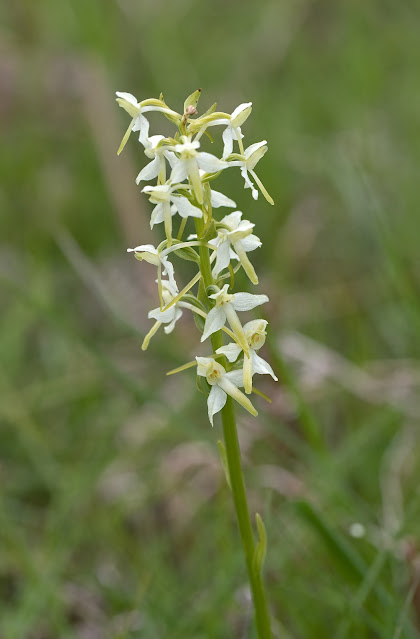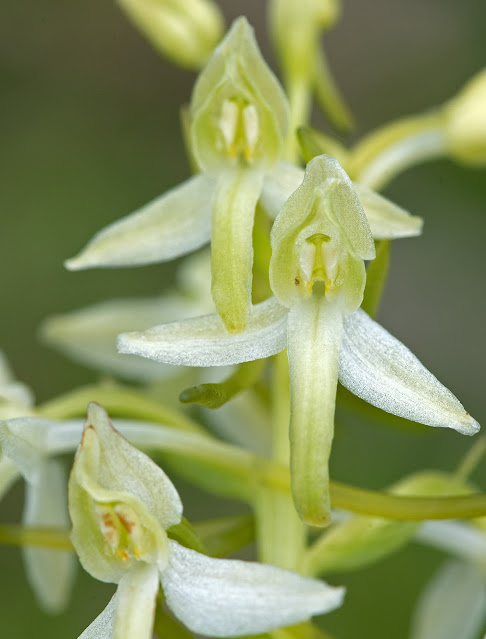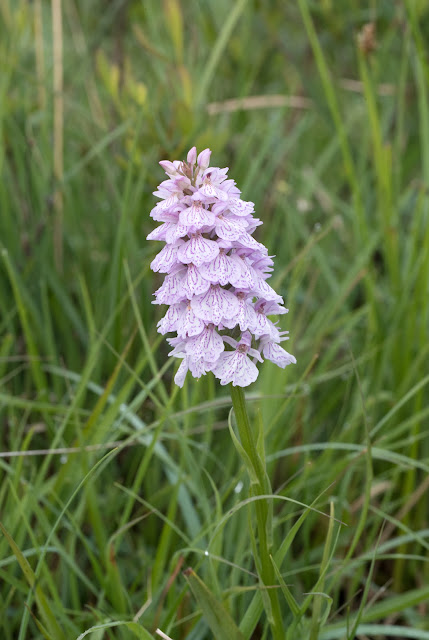Having received a precise location for Lesser Butterfly Orchid, Platanthera bifolia and that there were at least twenty fresh stems visible, I decided that an early morning visit to the New Forest had to be made. So this morning I rose at 0500, made a brew, well you can't go anywhere without a cup of tea inside you, and set off at 0530. It was a glorious morning, bright sunshine and empty roads making for a pleasant and fairly rapid journey to the Forest beyond Lyndhurst.
By 0700 I had parked up and set off on what I intended to be a circumnavigation of a fairly large Inclosure, the problem being there was nowhere to park adjacent to the orchids. Well the upshot was that I had to negotiate some pretty rough boggy ground but I arrived at the said location and true to the word received, there were some nice fresh Lesser Butterfly Orchids to be recorded.
On the way I had managed to snap a few Heath Spotted Orchids, Dactylorhiza maculata. So, all in all a satisfying result that made a straightforward return journey along the easy rides of the Inclosure all the more pleasant.
Note: In the New Forest enclosures are called Inclosures a name given to an area of land originally 'enclosed' by fences.
 |
| Heath Spotted Orchid, Dactylorhiza maculata |
 |
| Heath Spotted Orchid, Dactylorhiza maculata |
 |
| Heath Spotted Orchid, Dactylorhiza maculata |
 |
| Heath Spotted Orchid, Dactylorhiza maculata |
 |
| Heath Spotted Orchid, Dactylorhiza maculata |
 |
| Heath Spotted Orchid, Dactylorhiza maculata |
When I arrived back at the car it was exactly three hours since I had set off so I was in need of a drink and some sustenance. I grabbed my sandwiches and headed off to a green patch where I could sit comfortably. Lo and behold, just 50 yards from the car I found a patch of 30 of the orchids that I had just laboured for three hours to record. "Well I'm blowed" I said.
I have a high regard for Foxgloves, Digitalis purpurea - as they are great garden plants that attract a host of bees. I came across a small clearing in the forest and it was obvious how opportunistic they are. As soon as felled timber allows light in, they germinate immediately and after two years are producing huge spikes until the canopy closes in once again.













No comments:
Post a Comment